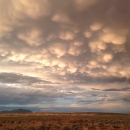Evaluating the effectiveness of conservation actions directed for greater sage-grouse using hierarchical models and the Conservation Efforts Database
Funding Year | Amount | Location |
FY22 | $150,000 | Rangewide |
FY23 | $150,000 | Rangewide |
| FY24 | $95,000 | Rangewide |
Project Description
The Conservation Efforts Database is a web-based data portal to collect information from federal and non-federal partners on management actions that benefit sagebrush sagebrush
The western United States’ sagebrush country encompasses over 175 million acres of public and private lands. The sagebrush landscape provides many benefits to our rural economies and communities, and it serves as crucial habitat for a diversity of wildlife, including the iconic greater sage-grouse and over 350 other species.
Learn more about sagebrush ecosystems and sagebrush-dependent wildlife habitats. This project leverages the existing hierarchical population modeling framework and modifies it to identify when significantly declining populations of sage-grouse have recovered to reflect broad-scale trends, and whether recovery can be linked to conservation actions captured through the Conservation Efforts Database and Land Treatment Digital Library, occurring across the geographic range of sage-grouse.
Partners
U.S. Geological Survey, U.S. Fish and Wildlife Service – Science Applications


